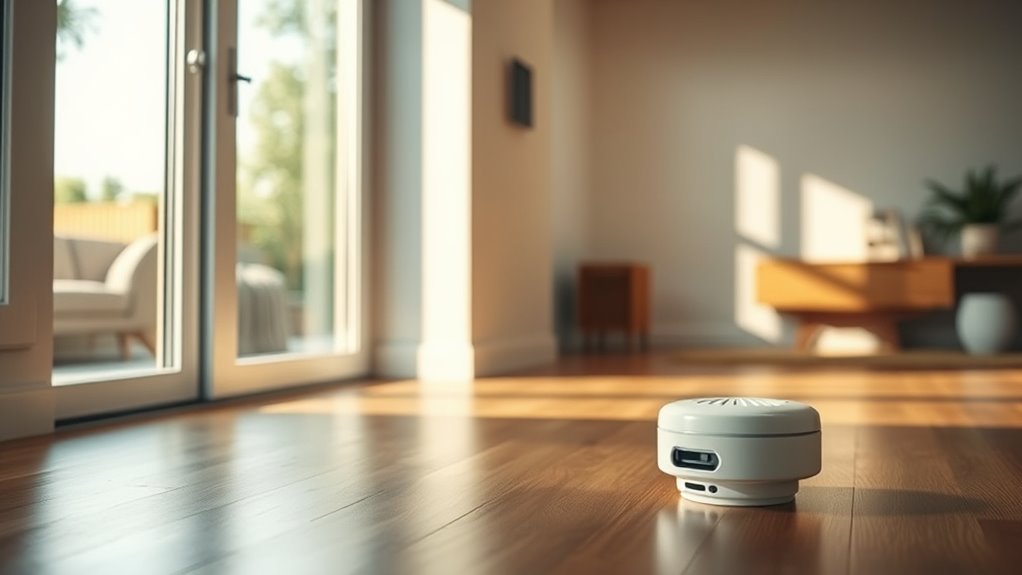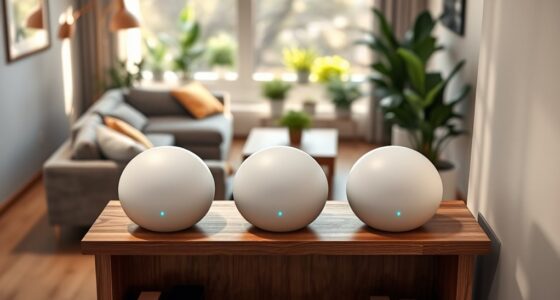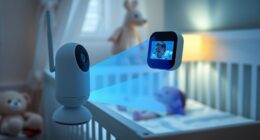Using smart sensors for home monitoring lets you detect water leaks early with leak sensors, monitor door and window openings with contact sensors, and track activity with motion detectors. Choose sensors compatible with your smart home system and place them in key spots like near water sources or entry points. These sensors can automate responses, like shutting off water or triggering alarms, keeping your home safe. Keep exploring to learn how to optimize their placement and maximize your security.
Key Takeaways
- Deploy leak sensors near water sources and appliances to detect leaks early and prevent water damage.
- Install door/window contact sensors with magnets at entry points for instant alerts on openings.
- Integrate sensors with smart home systems to automate responses like shutting off water or activating alarms.
- Choose sensors with long battery life and reliable detection to minimize false alarms and maintenance.
- Regularly test and position sensors correctly to ensure effective monitoring and quick response to issues.
Types of Smart Sensors for Home Monitoring
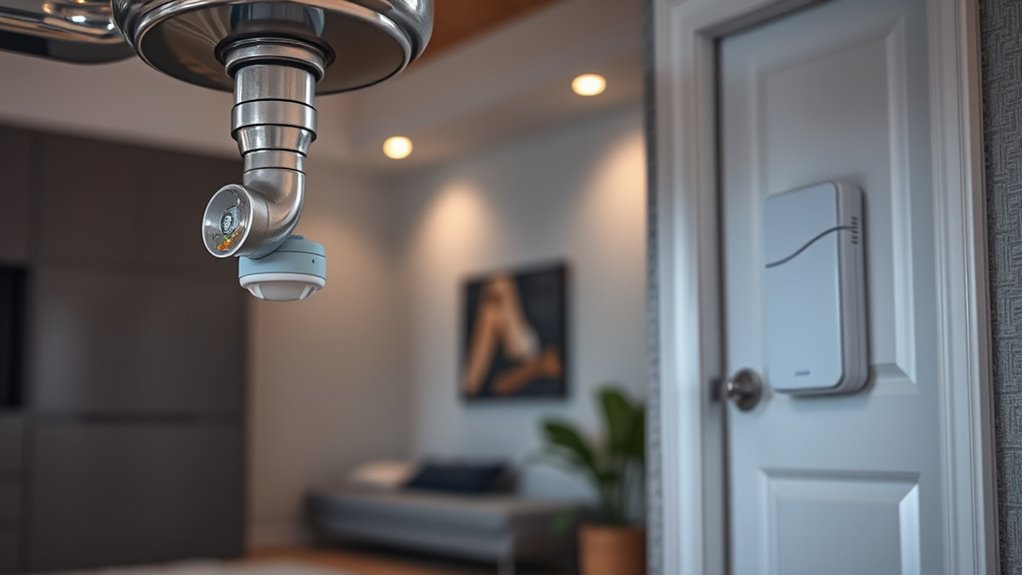
Smart sensors for home monitoring come in various types, each designed to detect specific changes or events around your house. Leak sensors alert you to water leaks early, preventing flooding, and often shut off water automatically. Vetted contact sensors, using magnets, detect when doors or windows open or close, providing instant alerts for home security or automation. Motion sensors monitor activity, triggering alerts, lights, or cameras to keep you aware of movement inside or outside your home. Environmental sensors track indoor air quality, temperature, and humidity, helping you maintain a safe and comfortable environment. Properly integrated sensors can prevent costly damages by detecting issues promptly, reducing the risk of extensive repairs. Understanding the different sensor types can help you choose the right system for your needs. Incorporating sensors that detect environmental changes can further enhance your home’s safety and efficiency. With real-time alerts, you stay informed about what’s happening at home, whether you’re there or away.
Selecting the Right Sensors for Your Space
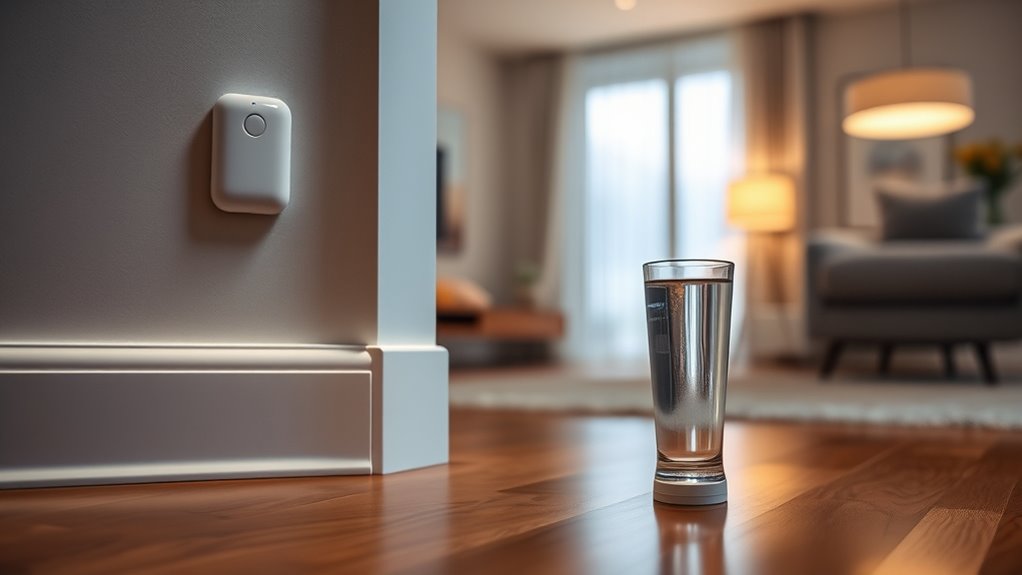
Choosing the right sensors for your space requires careful consideration of their detection capabilities, compatibility, and placement. You want motion sensors that respond quickly and reliably, like Aqara P1, and door/window sensors that effectively monitor entry points. Confirm the sensors support your existing smart home technology, whether it’s Zigbee, Z-Wave, or proprietary hubs, for seamless integration. Studies show that security systems can significantly deter burglars and increase your peace of mind. Pay attention to sensor placement; discreet, unobtrusive designs blend into your decor while maximizing coverage. Consider battery life—long-lasting options reduce maintenance, with some lasting up to five years. Prioritize leak detection sensors for vulnerable areas, and opt for alerts that notify you instantly. Selecting sensors that match your needs enhances security and convenience without sacrificing aesthetics, and understanding industry trends helps you make informed choices. Incorporating smart home technology and industry trends can also help you stay focused and calm while managing your smart home systems effectively. Additionally, choosing sensors with advanced detection capabilities ensures more accurate monitoring and fewer false alarms.
Setting Up Sensors for Effective Leak Detection
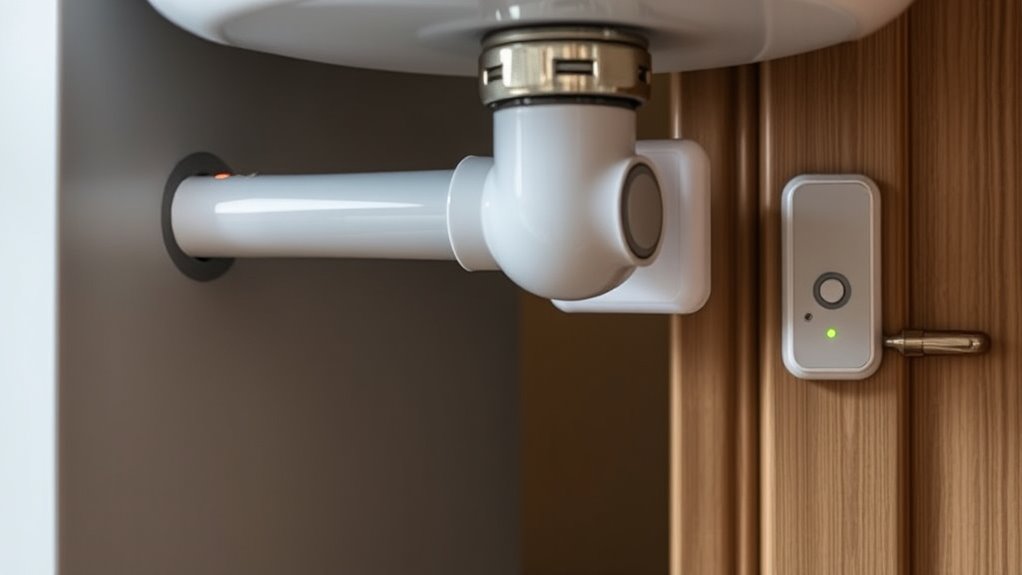
Once you’ve selected the right leak sensors, the next step is setting them up for ideal performance. Proper sensor placement is vital for water leak detection—position leak sensors near potential trouble spots like under sinks, behind appliances, and along basement floors. To further enhance detection capabilities, consider incorporating Kia Tuning principles to optimize sensor positioning based on your home’s layout and potential water risk areas. Place sensors at water source levels or a few inches above the floor to catch leaks early. Confirm sensors with audible alerts and app notifications are within your reach for immediate awareness. Regularly test your sensors by simulating leaks to verify they trigger alerts as expected. Incorporate sensor calibration techniques to ensure accuracy over time, maintaining reliable detection. Additionally, maintaining clean sensor surfaces is crucial for preventing false alarms caused by dirt or debris. Incorporate smart home integration to enable coordinated responses, such as shutting off water valves or activating alarms. This setup helps prevent water damage by enabling early detection and swift, automated responses. Effective sensor placement is essential for maximizing the reliability of your leak detection system.
Enhancing Security With Door and Window Sensors
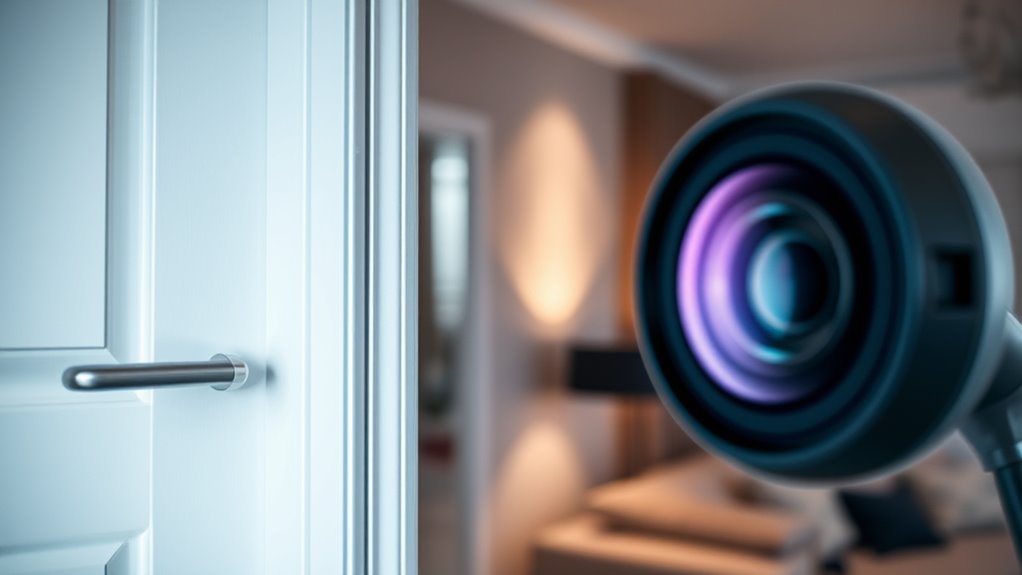
Are you looking for a simple way to boost your home’s security? Door and window sensors are your answer. These wireless devices use magnets to detect when entry points are opened, triggering instant alerts and notifications.
Enhance home security effortlessly with wireless door and window sensors that send instant alerts.
They support seamless integration with your smart home system, enhancing intrusion detection without hassle. When paired with automation, they can activate alarms, turn on cameras, or notify you immediately of suspicious activity.
Installing these sensors is quick and tool-free, making them perfect for every entry point.
- Feel secure knowing you’re instantly alerted to intrusions
- Protect your loved ones with real-time notifications
- Enjoy peace of mind with automated security routines
- Easily integrate sensors into your existing smart home setup
- Keep your home safe, effortlessly
Automating Home Responses to Sensor Alerts
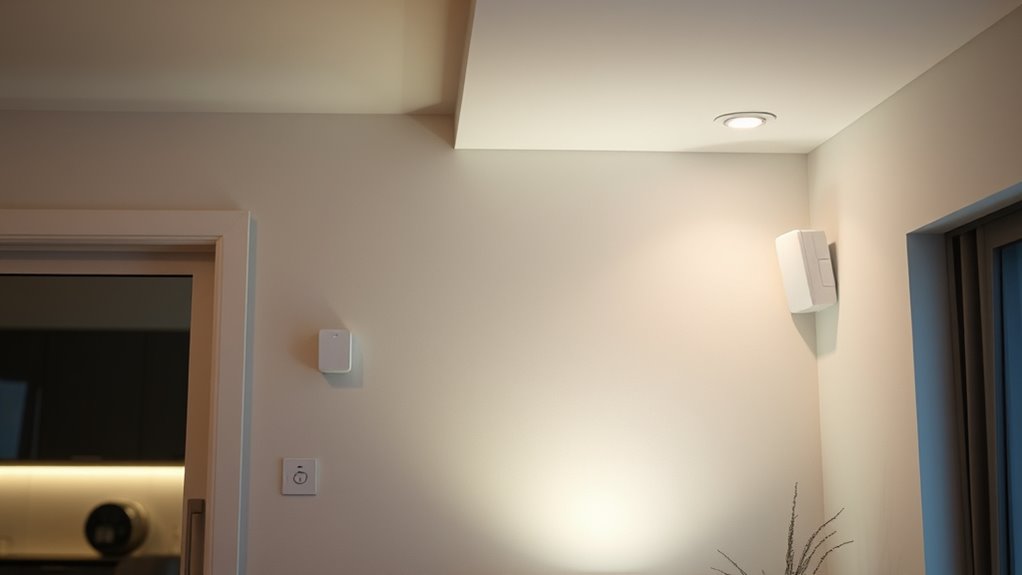
By automating your home’s responses to sensor alerts, you can respond to potential issues swiftly and efficiently. Smart home sensors, like leak detection and door sensors, enable your system to act automatically. For example, when a leak sensor detects water, it can shut off the main water supply instantly, preventing damage. Proper maintenance of sensors ensures they operate correctly and reliably over time. Door sensors can trigger smart locks or alarms if unauthorized access occurs, enhancing security automation. Motion sensors can turn on lights or activate cameras, improving security and energy efficiency. Sensor notifications alert you to issues needing attention, while smart device integration allows for customized routines—such as closing windows when rain is detected. Additionally, understanding sensor longevity and proper maintenance can ensure your system remains reliable over time. Incorporating reliable sensors can further enhance the effectiveness and durability of your home monitoring system, especially considering the celebrity lifestyle insights that emphasize the importance of innovative and efficient home solutions.
Frequently Asked Questions
Are Door Sensors Worth It?
You might wonder if door sensors are worth it, and the answer is yes. They give you instant alerts when doors or windows open unexpectedly, boosting your home security and safety.
Discreet and responsive, they can trigger automations like turning on lights or sending notifications. With quick response times and reliable performance, door sensors protect your home even when you’re away, making them a smart investment for peace of mind.
Does Google Nest Have a Door Sensor?
They say, “You can’t have your cake and eat it too,” but with Google Nest, you might feel that way about door sensors.
Currently, Nest doesn’t offer a dedicated door sensor. You’ll need third-party Zigbee or Z-Wave sensors integrated through compatible hubs.
While Google Home supports automation, you’ll want to choose compatible sensors carefully, since native options are limited and the Nest Secure system has been discontinued.
How Do Home Security Door Sensors Work?
Home security door sensors work by detecting whether your door is open or closed. You’ll have a magnet attached to the door and a sensor on the frame, which communicate wirelessly with your system.
When the door opens, the magnet moves away, triggering an alert. These sensors send instant notifications, helping you stay aware of any unauthorized access or if someone leaves a door open.
How Close Do Door Sensors Need to Be?
Imagine the peace of mind knowing your home is secure—that’s why proper sensor placement matters.
You should install your door sensors within about 1 to 2 inches of the magnet when the door is closed, ensuring reliable detection.
Keep in mind, metal surfaces or thick frames may require even closer placement, within 1/4 to 1/2 inch, for quick, accurate alerts and ideal security.
Conclusion
Now that you know how smart sensors can protect your home, imagine what’s next. Will you catch that leak before it causes damage? Can your door sensors alert you instantly, keeping intruders at bay? The possibilities are endless—and the moment to act is now. With the right setup, your home becomes smarter, safer, and more responsive. Are you ready to take the next step and unleash the full potential of your smart home?
